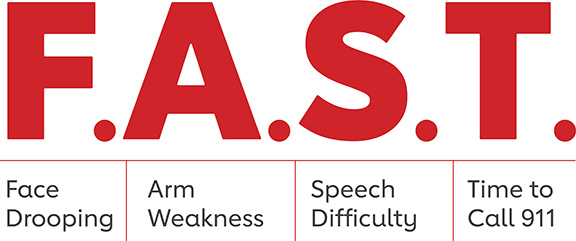A stroke, commonly referred to as a “brain attack”, occurs when there’s an interruption of blood flow to the brain, either due to a blocked blood vessel (ischemic stroke) or a burst blood vessel (hemorrhagic stroke). Recognizing the signs and symptoms of a stroke in its early stages can greatly improve the chances of survival and minimize long-term damage.
Early Recognition: The FAST Approach
The FAST mnemonic is a simple, yet effective method to quickly recognize the most common symptoms of stroke:
- F – Face: Does one side of the face droop or is it numb? Ask the person to smile. Is their smile uneven or lopsided?
- A – Arms: Is one arm weak or numb? Ask the person to raise both arms. Does one arm drift downward?
- S – Speech: Is speech slurred? Ask the person to repeat a simple sentence. Can they do it correctly?
- T – Time: If someone shows any of these symptoms, even if the symptoms go away, it’s time to call 9-1-1 and get them to the hospital immediately.

Read more about stroke awareness here.
Other Signs to Look Out For
While FAST captures some of the most recognizable signs, strokes can manifest in various ways:
- Sudden numbness or weakness in the leg.
- Sudden confusion or trouble understanding.
- Sudden trouble seeing in one or both eyes.
- Sudden trouble walking, dizziness, loss of balance or coordination.
- Sudden severe headache with no known cause.
Minor Strokes and Transient Ischemic Attacks (TIAs)
A TIA, commonly known as a “mini-stroke”, produces stroke-like symptoms but typically doesn’t cause lasting damage. Although TIAs are often considered ‘warning strokes’, they should be taken seriously as they can be a sign that a more severe stroke is imminent.
What to Do if You Suspect a Stroke
- Act Immediately – Time is of the essence. If you or someone around you is exhibiting signs of a stroke, call emergency services right away. Don’t wait to see if the symptoms pass.
- Note the Time – Record the time when symptoms first appeared. This can be crucial information for medical professionals, especially when deciding upon treatments.
- Stay Calm – Keep the person calm and ensure they are in a safe place. If they are conscious, have them lie down and monitor their symptoms.
- Do Not Give Medication – Avoid giving the person any medicine unless instructed by a medical professional. Some medicines can make the situation worse.
- Stay with the Person – Do not leave the person alone as their condition may deteriorate.
The Importance of Immediate Treatment
When it comes to a stroke, every minute counts. The longer the brain is deprived of oxygen and nutrients, the greater the potential for lasting brain damage, disability, or death. Immediate medical intervention can make a difference in recovery. Treatments are most effective when initiated within the first few hours after the onset of symptoms.
Closing Thoughts
Awareness is the first step in preventing the devastating effects of a stroke. Equipping ourselves and our communities with knowledge about the signs and immediate actions to take can save lives and reduce the long-term impact of this medical emergency. Remember the FAST mnemonic and always err on the side of caution. When in doubt, seek medical attention.

Recent Comments